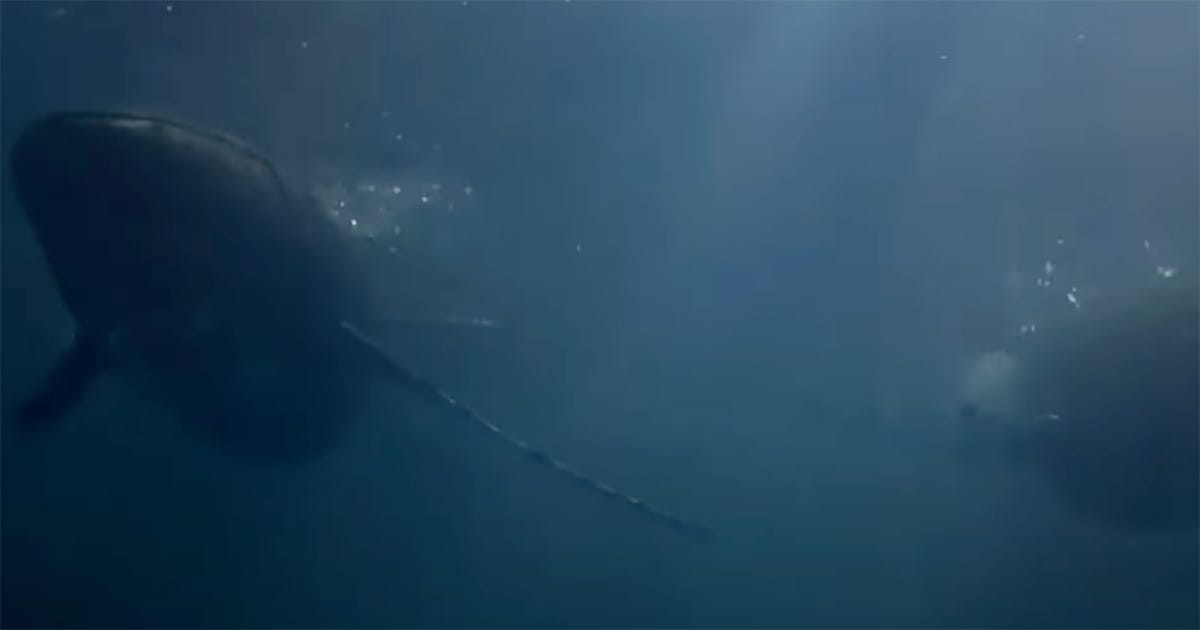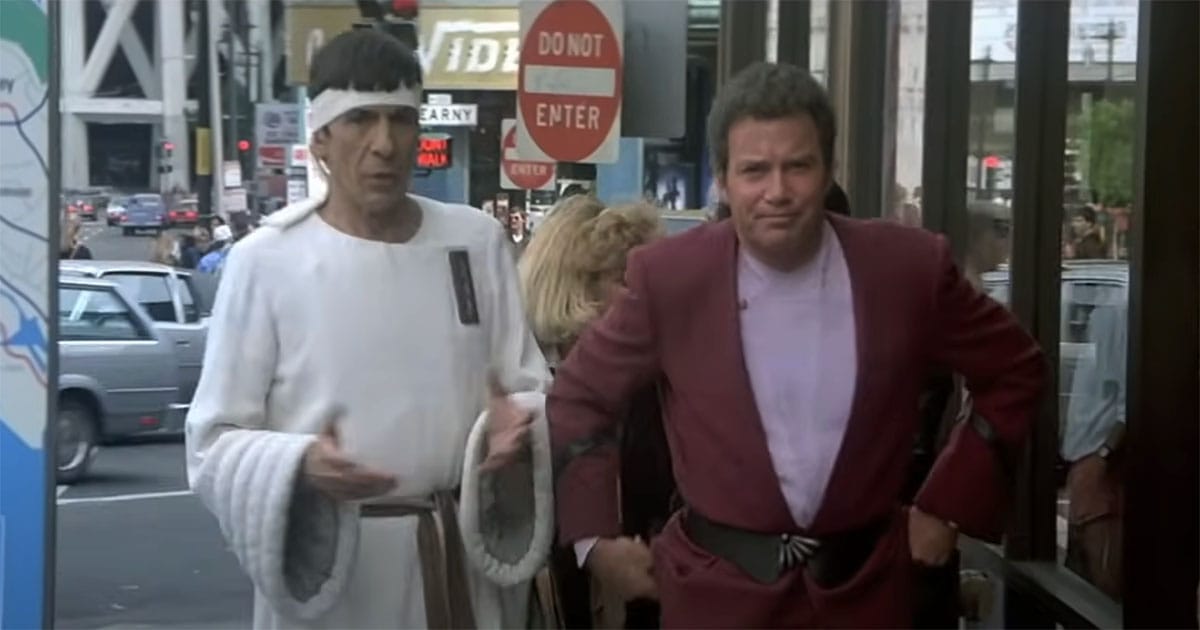The Star Trek Film That Spoke for the Whales
"Star Trek IV: The Voyage Home" (1986), directed by Leonard Nimoy, combines humor and environmental themes, earning a rating of 7.3/10. A nostalgic classic.

"Star Trek IV The Voyage Home," released in 1986 and directed by Leonard Nimoy, presents an unusual mission for the crew of the Enterprise. Instead of interstellar conflict, the story revolves around a vanished species of whale and an alien probe that cannot be reasoned with. The screenplay, written by Harve Bennett, Nicholas Meyer, Steve Meerson, and Peter Krikes, moves the action not across the stars but through time.
The crisis is elegant in its simplicity. The probe transmits signals meant for humpback whales, unaware they have long since gone extinct. Without a response, Earth begins to unravel. The only solution is to retrieve a pair of whales from 20th-century San Francisco.
This premise allows the film to explore both ecological responsibility and cultural contrast. The crew must navigate modern-day Earth, complete with awkward customs and primitive technology. Their interactions offer humor, but the film does not treat its theme lightly. The survival of the planet depends on preserving life rather than conquering it.
"Star Trek IV" demonstrates that science fiction need not rely on spectacle to remain compelling. The future it imagines is not one of machines alone but of decisions made wisely. It reminds us that science, though powerful, must work in harmony with nature. The result is a thoughtful, amusing, and unexpectedly moving chapter in the Star Trek saga.
| Attribute | Value |
|---|---|
| Title | Star Trek IV: The Voyage Home |
| Director | Leonard Nimoy |
| Writer | Gene Roddenberry, Leonard Nimoy, Harve Bennett |
| Actors or actresses | William Shatner, Leonard Nimoy, DeForest Kelley |
| Rated | PG |
| Runtime | 119 min |
| Box Office | $109,713,132 |
| U.S. Release Date | 26 Nov 1986 |
| Quality Score | 7.3/10 |
Synopsis
Once the crew arrives in 20th-century San Francisco, they are immediately confronted with a world both familiar and alien. Cars honk, money matters, and computers are too slow to understand. The crew splits into teams. Each must carry out a part of the plan without drawing attention to their true origins.
Dr. McCoy and Scotty focus on acquiring materials for a makeshift whale tank aboard their cloaked Klingon ship. Kirk and Spock track down Dr. Gillian Taylor, a marine biologist who cares for two humpback whales at a local aquarium. Her knowledge proves essential, but so does her trust. As the stakes rise, she becomes more than just a helper — she becomes part of the mission.

The crew's efforts are often interrupted by the strangeness of modern-day Earth. Spock's logic clashes with casual conversation. McCoy is appalled by 20th-century medicine. Even simple tasks, like catching a city bus, become moments of comic frustration. Yet each of these scenes adds depth and humor to the story.
While the crew works to secure the whales, the alien probe continues its destructive course in the future. Earth's atmosphere weakens. Power grids collapse. The message is simple — without the whales, the planet will not survive.
The final act builds toward a narrow escape. With the whales aboard and Dr. Taylor joining them, the crew slingshots back through time. The whales' songs answer the probe's call, bringing the threat to an end. Earth is saved, not by weapons, but by wisdom and preservation.
Themes
"Star Trek IV The Voyage Home" engages the viewer not only with a clever storyline but with themes that carry lasting weight. At its center is a message of environmental caution. The extinction of the humpback whale, central to the plot, serves as a symbol of mankind's disregard for the natural world. The film asks a simple question — what happens when progress outruns wisdom?
The Enterprise crew, traveling from a future of great technological advancement, finds itself reliant on the resources of a less advanced past. This contrast is not incidental. It brings into focus the film's central warning. A society that loses its connection to nature, no matter how advanced, is still vulnerable.

The crew's journey through 20th-century San Francisco is filled with humor, but the humor never distracts from the message. Instead, it reinforces it. Spock's logical responses to human behavior, McCoy's disbelief at primitive medicine, and Kirk's attempts to navigate city life all remind us that knowledge without understanding can fall short. The absurdity of the situations only underscores the seriousness of the stakes.
The film's conservation message is strengthened by its emotional appeal. The whales are not abstract symbols. They are living creatures with songs, personalities, and roles in Earth's balance. When the crew fights to save them, the viewer feels the urgency. There is no enemy to defeat. The danger is silence — the silence of a species gone forever.
Themes of unity and cooperation flow naturally from the narrative. The crew functions not as individual heroes but as a disciplined team. Dr. Gillian Taylor's role highlights the value of interdisciplinary knowledge. She is not from the future, but her expertise becomes essential.
Visually, the film captures both the nostalgia of the 1980s and the quiet grandeur of the natural world. Scenes of the city, the ocean, and the whales themselves offer moments of reflection. The time-travel sequences are brief but effective, suggesting wonder without relying on spectacle. The Golden Gate Bridge, always present in the background, serves as a visual anchor, connecting past and future.

Sound plays an equally important role. The musical score adapts to the shifts in tone — light during comedic moments, tense when urgency rises. The inclusion of the whale song is more than atmospheric. It is part of the story's heartbeat. These sounds help the viewer feel the stakes beyond dialogue or action.
In the end, "The Voyage Home" is not merely an adventure. It is a reminder. The future depends on how we treat the world today. The film manages to entertain while quietly insisting that responsibility must accompany knowledge. That is a message worth hearing.
Who Will Enjoy Star Trek IV: The Voyage Home
"Star Trek IV The Voyage Home" reaches well beyond the standard science fiction audience. Its blend of humor, heart, and message makes it suitable for families, casual viewers, and longtime fans alike. The story strikes a balance between entertainment and reflection, offering laughter without sacrificing meaning. Viewers seeking a film that uplifts while educating will find much to enjoy.

Those interested in environmental themes will find the film especially rewarding. Watching it can spark meaningful discussion, whether during Earth Day or as part of an educational program. It is a story that entertains while encouraging responsibility.
Fans of strong character dynamics will also be drawn in. The camaraderie among the crew, their ability to solve problems under pressure, and the light-hearted dialogue add depth and charm. Groups of friends, especially those who enjoy ensemble casts, will appreciate the natural flow of teamwork on display.
The film's setting — a vivid San Francisco of the 1980s — adds a layer of nostalgia. Viewers who enjoy stories rooted in real places and past times will find it comforting. For a quiet evening, especially one spent indoors, this movie offers a warm, thoughtful escape into a different era.

